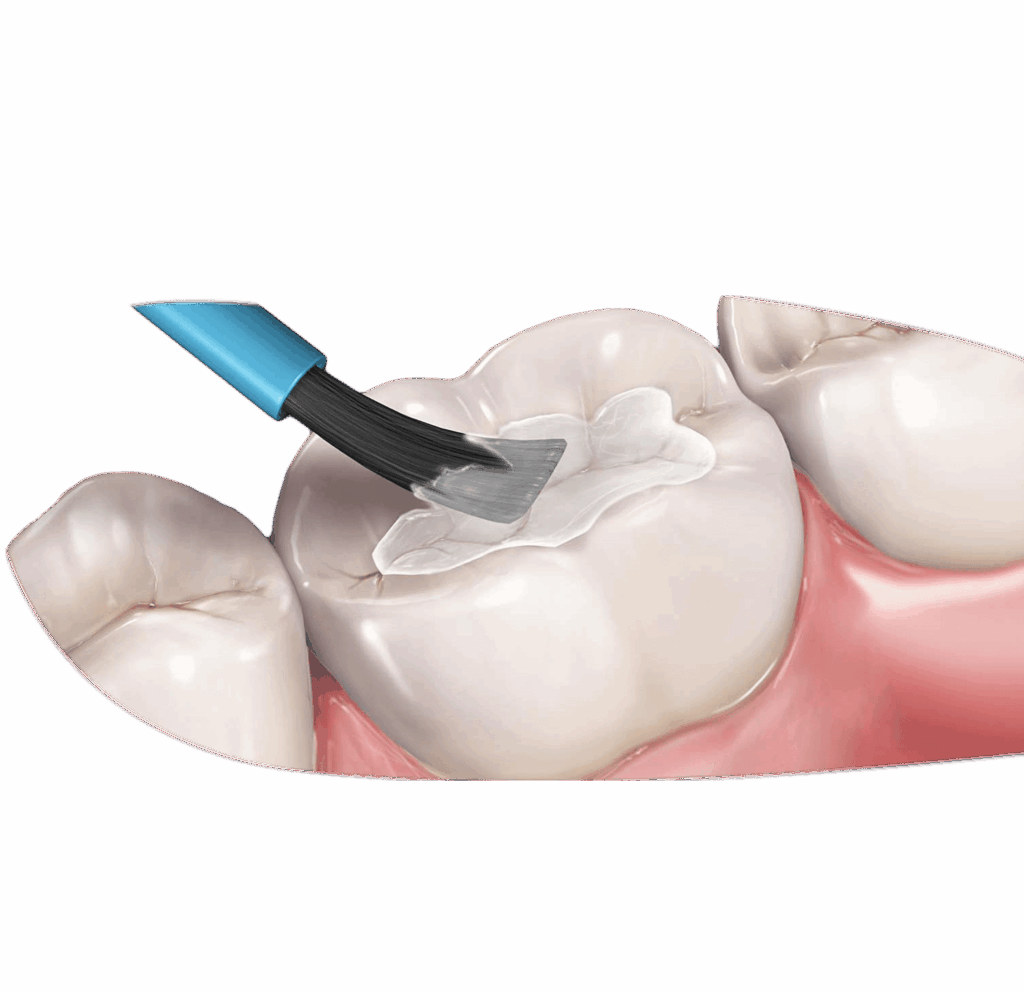Fluoride Treatment and Fissure Sealants

During childhood, many factors can cause teeth to be prone to developing cavities. In addition, the rate at which existing cavities progress may be faster than in adults. Therefore, routine oral and dental care is much more critical in the early stages of life. Certain preventive procedures performed during this period can help smooth out the risky surfaces of the teeth or increase their durability. In this context, planned fluoride and fissure sealant applications can help facilitate oral care in children.
What is fluoride treatment?
Fluoride treatment is a dental treatment that strengthens the hard structure of teeth by adding fluoride to them. These treatments increase the resistance of teeth to external factors, reducing the likelihood of developing cavities. Children should undergo an initial examination to assess the need for fluoride treatment.
When to put fluoride on teeth?
To ensure optimal support for tooth structure, the first fluoride application is typically administered before age 3 as part of baby tooth treatments. After age 3, treatments can be performed at intervals determined by the dentist based on the risk of tooth decay.
How is fluoride treatment performed?
Food and plaque debris on the tooth surface are cleaned, and the teeth are dried. Then, fluoride in gel or varnish form is applied to the tooth surface. In treatments where the gel form is preferred, the gel is left on for a while and then cleaned off the teeth. In the varnish form, the treatment is completed after the varnish applied to the surface dries. To ensure the effectiveness of fluoride treatments, it is recommended to avoid eating and drinking for the first 1-2 hours following the treatment.
What is fissure sealant?
Fissure sealant applications are procedures that involve treating the grooved and fissured surfaces of teeth with a special material. These applications are performed using a flowable form of composite dental fillings for aesthetic appearance.
The main purpose of fissure sealant applications is to help protect teeth until children reach the age when they can effectively brush their teeth by fully applying their motor functions. It can be used to make the tooth surface easier to clean when the grooved areas of the teeth are too deep to be cleaned ideally.
In addition, it can be applied to minimise the adhesion of food debris to the chewing surface in children at high risk of developing caries. This application, which does not cause pain, can be completed quickly and easily. It is one of the ideal treatment applications for getting children who are visiting the dentist for the first time or who are afraid of the dentist accustomed to treatment.
When should sealants be placed?
Fissure sealants are generally performed on permanent first and second molars. Therefore, they are applied after these teeth have erupted.
The first permanent molars usually erupt at the age of six, and fissure sealants can be applied to these teeth when the chewing surface of the tooth is fully visible in the mouth.
Fissure sealants can be applied to other molars as they erupt in subsequent years. They can be used on children of any age if the decay is limited to the enamel layer.
In addition to permanent teeth, fissure sealants may also be planned for primary teeth in children at high risk of decay.

How to apply fissure sealants?
The tooth surface is thoroughly cleaned and dried, and an acid solution is applied to create an adhesion surface for the application area. After cleaning the solution and drying the area again, the fissure sealant is applied to the grooved areas.
The material is light-cured, and the treatment is completed after checking the result of the procedure.
